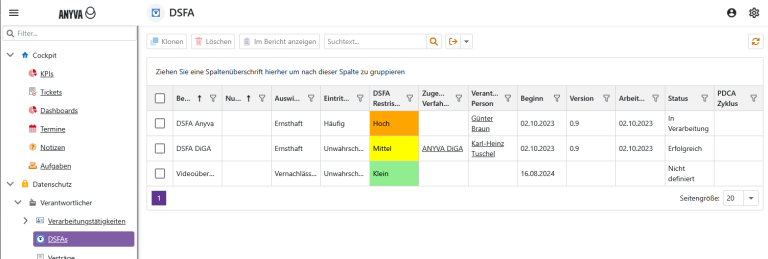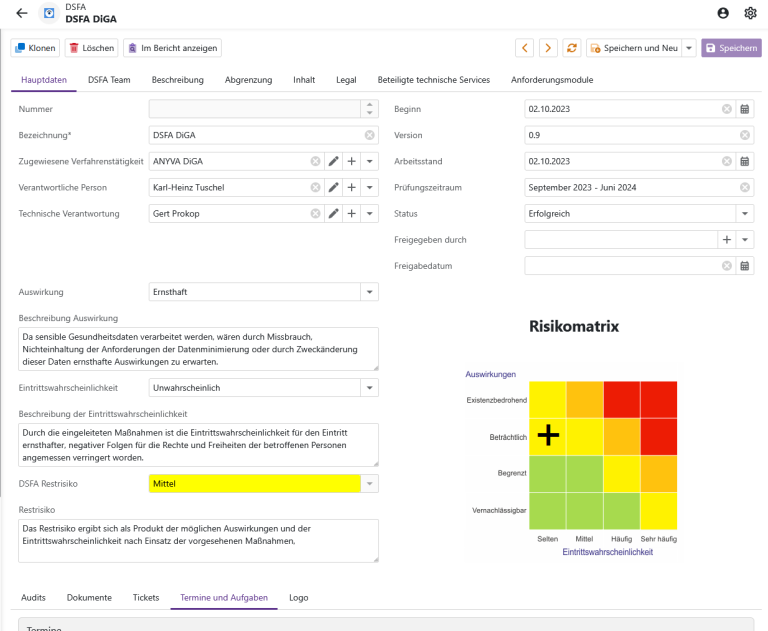Conducting a data protection impact assessment (DPIA) is a challenge for many organisations - legally complex, technically demanding and often difficult for non-experts to grasp. Anyva changes this fundamentally: With an innovative, modular approach, Anyva makes the DPIA comprehensible, reproducible and feasible even for data protection laypersons.
Anyva is one of the few data protection management systems on the market that offers a classic risk analysis for data protection risks.
Your advantages with Anyva at a glance:
Anyva brings structure and clarity to your DPIA - for more data protection, more security and more trust.

DSFA can be described in detail. All relevant data can be taken from the associated process activity. Thanks to the integration into PDCA processes, each DPIA remains "alive" and does not disappear unused in a drawer
The residual risk shown here results from the individual risks of the assigned requirement modules.
